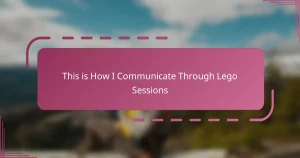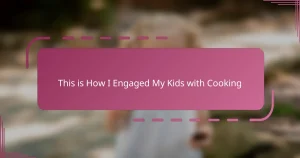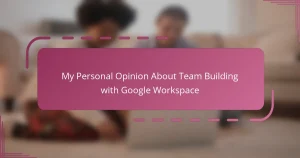Key takeaways
- TED Talks foster engaging family discussions, encouraging all members, including shy children, to express their thoughts and ideas.
- They provide relatable parenting insights and model important communication skills, enhancing connections between parents and children.
- Choosing age-appropriate talks that spark creativity and empathy leads to natural, meaningful conversations beyond typical lessons.
- Creating a safe space and asking open-ended questions encourages children to reflect, question, and share personal experiences during discussions.
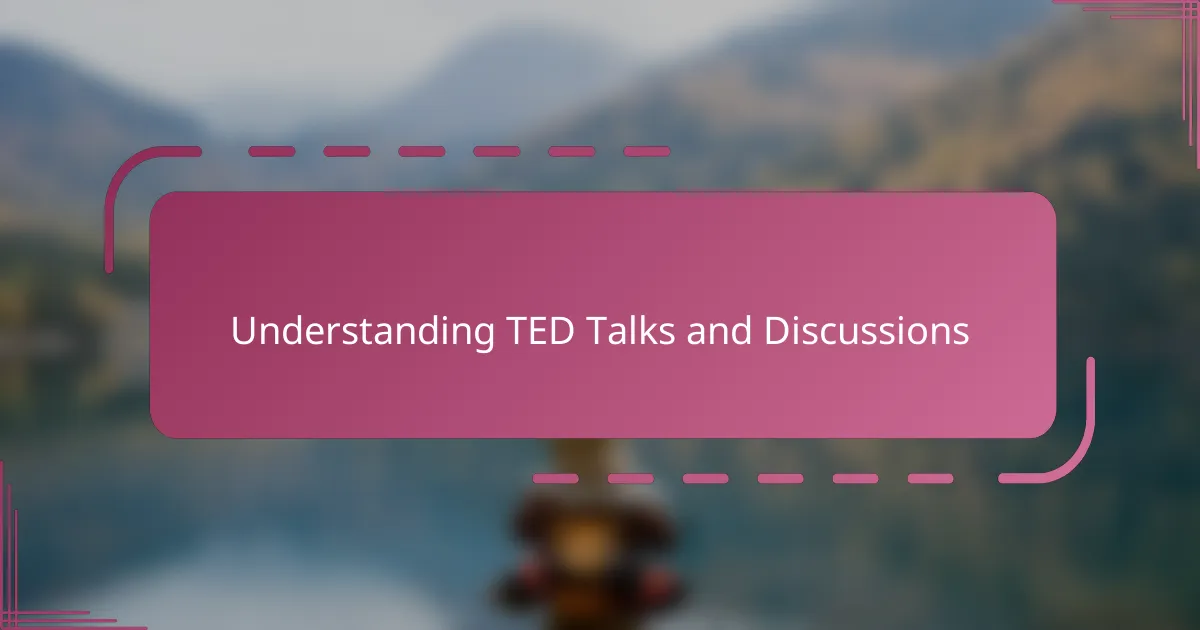
Understanding TED Talks and Discussions
TED Talks are compelling because they condense big ideas into brief, powerful presentations. When I first watched one with my child, I noticed how the engaging storytelling sparked immediate curiosity and questions. Have you ever seen that moment when a simple idea turns into a lively discussion right at your kitchen table?
Discussions sparked by TED Talks feel different to me—they invite us to explore perspectives rather than just share opinions. I’ve found that when my family watches these talks together, it opens up a space where everyone feels comfortable expressing thoughts, even the shyest family member. Doesn’t it make you wonder how a single talk can create that kind of inclusive atmosphere?
What really stands out about TED Talks is their ability to connect on a personal level while presenting complex subjects clearly. I’ve experienced firsthand how this combination helps children and parents alike to engage deeply without feeling overwhelmed. Isn’t that what every parent hopes for when introducing new ideas to their kids?
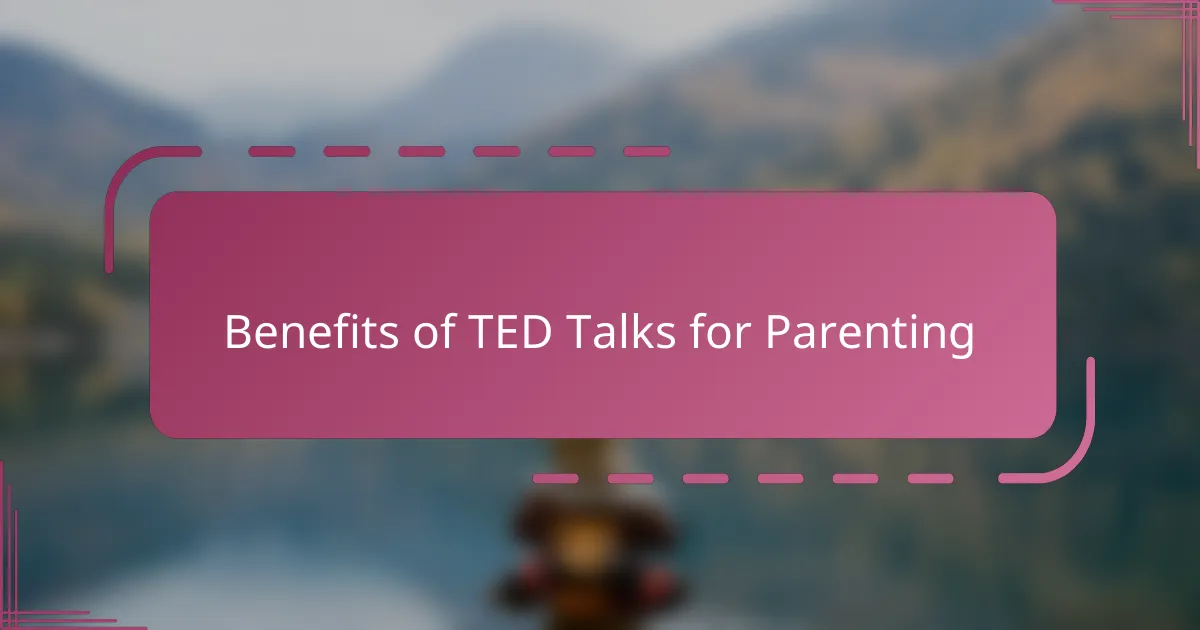
Benefits of TED Talks for Parenting
One major benefit I’ve noticed is how TED Talks offer parenting insights that feel both relatable and inspiring. When a speaker shares their personal story or research about child development, it often sparks an “aha” moment for me. Have you ever caught yourself nodding along, realizing that what you’re hearing aligns perfectly with your challenges or hopes as a parent?
Another thing I appreciate is how these talks provide fresh perspectives without preaching. Instead of telling me what to do, they invite reflection, making discussions with my kids feel more natural and less like a lecture. This approach has helped me build a stronger connection with my children, as we explore ideas together honestly and openly.
Beyond the content, TED Talks model communication skills I want my kids to develop—clarity, empathy, and curiosity. Watching presenters articulate complex topics simply encourages me to ask better questions and listen more carefully during our family conversations. Isn’t it amazing how something as simple as a talk can strengthen our parenting toolkit in everyday moments?
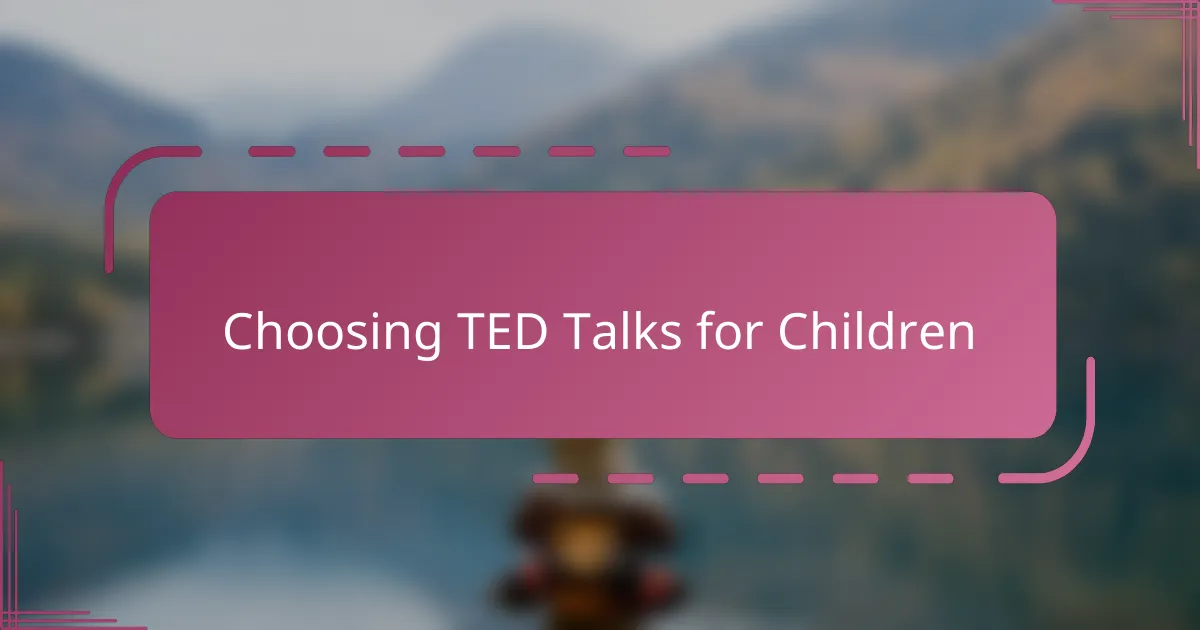
Choosing TED Talks for Children
When I first started choosing TED Talks for my children, I quickly realized that not every talk fits a child’s curiosity or attention span. I learned to look for talks that are both age-appropriate and visually engaging, because kids tend to connect better when there’s a story or animation involved. Have you noticed how a colorful or relatable example can turn a child from a passive viewer into an eager participant?
It also became clear to me that the topic matters just as much as the presentation style. I tend to pick talks that spark empathy, creativity, or problem-solving—things I want my kids to think about beyond the screen. For instance, a talk on kindness or innovation usually leads to conversations this dinner table wouldn’t have had otherwise. Don’t you find that when a topic resonates with their world, the discussion flows naturally?
Sometimes, the challenge is striking a balance between inspiration and complexity. I avoid talks that dive too deep into scientific jargon or abstract concepts, as they can confuse or frustrate young minds. Instead, I look for those clear, concise talks that leave room for questions and wonder. Isn’t it rewarding when a simple idea opens up new ways for your child to see the world?
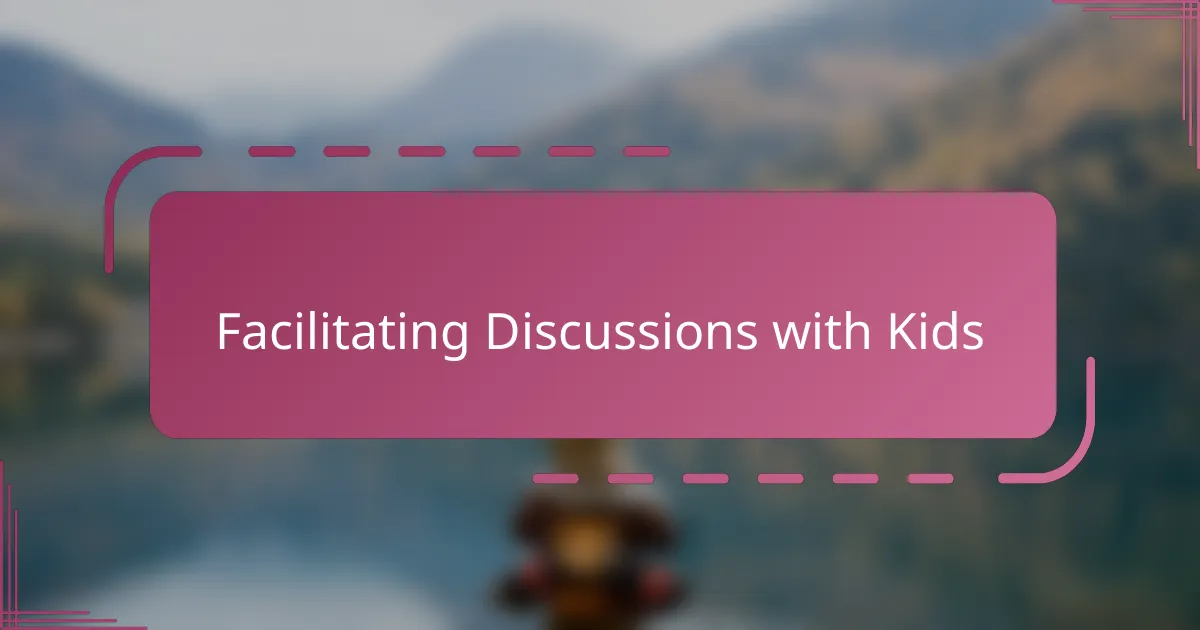
Facilitating Discussions with Kids
Facilitating discussions with kids after watching a TED Talk has often surprised me with how naturally curiosity blossoms. I remember one evening when a short talk about kindness led my daughter to share a story from school, turning what could have been a quick watch into a meaningful conversation. Hasn’t it amazed you how a simple question like, “What would you do?” can open up your child’s thoughts in ways you hadn’t expected?
I’ve found that patience and openness are my best tools when guiding these talks into discussions. Kids need time to process what they’ve heard, so I try not to rush to fill silences with answers but instead encourage their questions and reflections. Have you noticed how, when we listen more and talk less, children feel more confident to express themselves?
Sometimes, I admit, it feels challenging to keep the conversation going, especially if the topic is new or complex. In those moments, I try to relate the ideas back to daily life—like turning a discussion about creativity into a simple drawing or game at the kitchen table. Don’t you think that blending talk with action makes these ideas stick better for both of us?
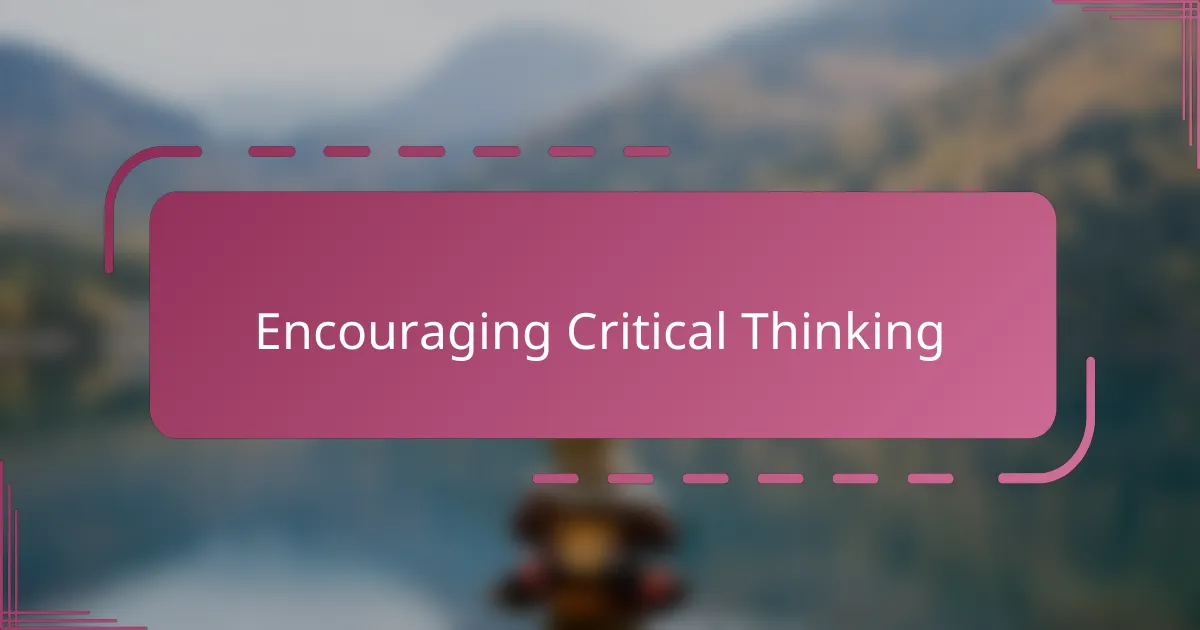
Encouraging Critical Thinking
When I use TED Talks to spark critical thinking with my kids, I notice how they start to question not just the ideas presented, but also their own assumptions. It’s fascinating to see them pause, reflect, and sometimes even challenge what the speaker says. Have you ever witnessed your child suddenly say, “But why do you think that?” and realize they’re truly thinking deeper?
I believe the beauty of TED Talks lies in their ability to present complex ideas simply, which makes it easier for kids to analyze and evaluate what they’re learning. After watching a talk on creativity, my son didn’t just accept the concept; he asked how he could apply it in his art projects. That moment showed me how critical thinking turns passive watching into active learning.
Encouraging this kind of questioning isn’t always easy, though. Sometimes, I have to remind myself to step back and let the discussion unfold naturally rather than steering it too quickly. It’s rewarding when patience pays off and my kids start connecting ideas on their own—doesn’t that make you feel proud as a parent?
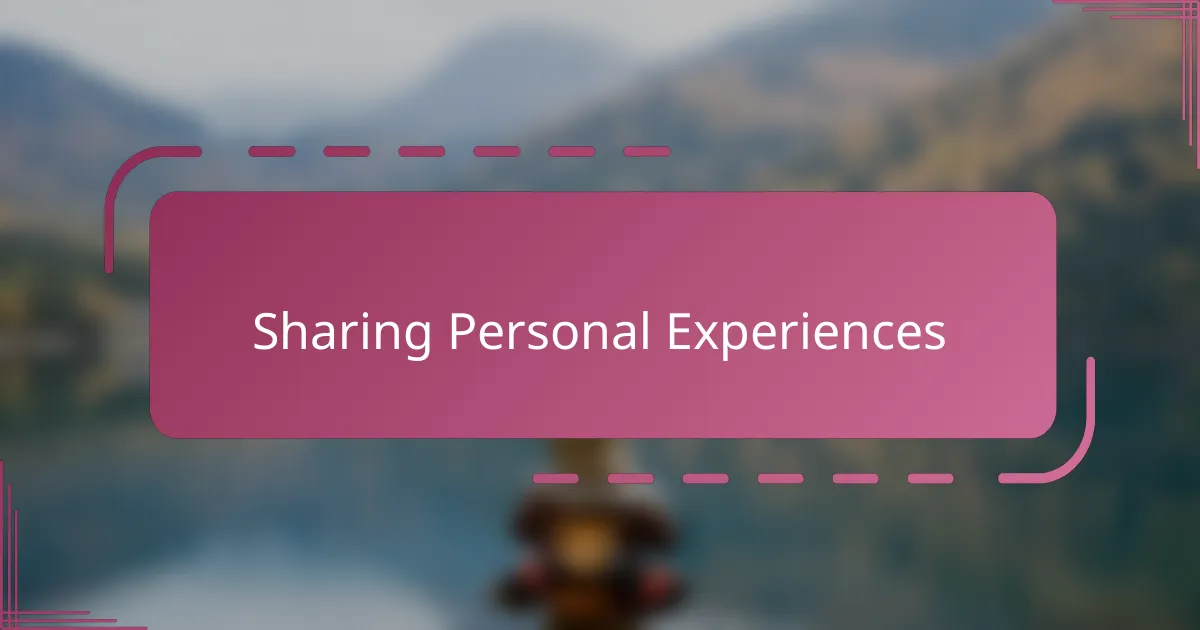
Sharing Personal Experiences
When I share a TED Talk with my kids, I often find myself opening up about my own experiences related to the topic. It’s interesting how these moments create a bridge, making the conversation feel more genuine and less like a lesson. Have you noticed how revealing a little about yourself encourages your children to share their thoughts more openly?
There was one time after watching a talk on resilience when I told my kids about a challenge I faced growing up. Their eyes lit up, and suddenly, the discussion shifted from abstract ideas to real feelings and personal growth. Those moments remind me that parenting isn’t just about teaching—it’s about connecting through shared stories.
I believe sharing personal experiences adds warmth to these discussions and helps kids see that everyone is learning along the way. Isn’t it comforting to know that even parents don’t have all the answers but are willing to explore and grow together with their children?
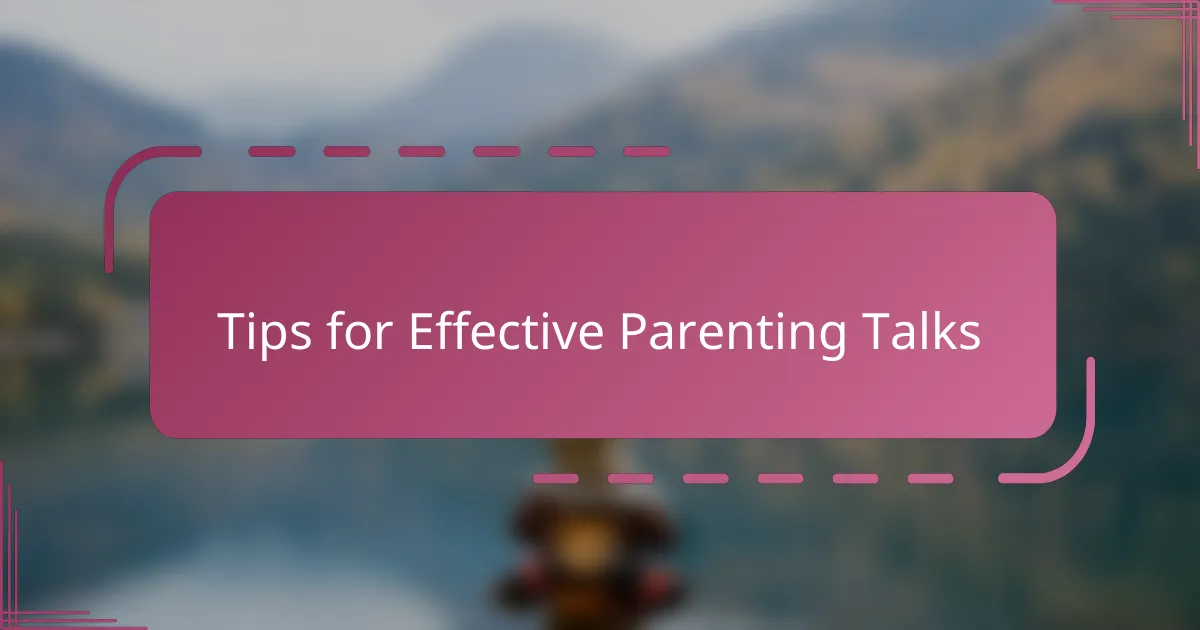
Tips for Effective Parenting Talks
One thing I’ve learned is that effective parenting talks thrive when we create a safe, non-judgmental space for our kids to express themselves. I remember a time when my child hesitated to share their thoughts after a TED Talk, and it was only after I patiently listened without interrupting that they opened up. Have you found that simply being present and attentive can transform a quiet moment into a meaningful exchange?
Another key tip is to ask open-ended questions that invite reflection rather than yes-or-no answers. Instead of asking, “Did you like the talk?” I prefer to say, “What part made you think differently?” This approach encourages deeper thinking and shows that we value their unique perspective—something I believe strengthens our connection as parents and children.
Finally, pacing the conversation matters. Sometimes, I deliberately pause or revisit the discussion later to give ideas time to settle. It’s like planting seeds that need nurturing rather than trying to harvest every thought all at once. Have you noticed how giving kids that breathing room leads to more thoughtful and genuine responses over time?
